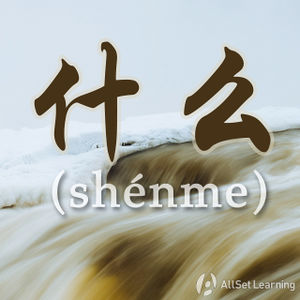Difference between revisions of "Expressing "everything" with "shenme dou""
| Line 76: | Line 76: | ||
<div class="liju"> | <div class="liju"> | ||
| − | * | + | * 生病 以后,爸爸 <em>什么</em> 酒 <em>都</em> <strong>不</strong> �能 喝 了。 <span class="pinyin">Yǐhòu nǐ yīnggāi <em>shénme</em> jiǔ <em>dōu</em> <strong>bù</strong> yào hē.</span> <span class="trans">From now on, you should not drink any alcohol.</span> |
| − | * | + | * 老板 现在 很 生气,<em>什么</em> 人 <em>�也</em> <strong>不</strong> �见。 <span class="pinyin">Xiǎo chéngshì <em>shénme</em> dōngxī <em>dōu</em> <strong>bù</strong> guì.</span> <span class="trans">Things in small cities are not expensive at all.</span> |
| − | + | * 你 在 家里 怎么 <em>什么</em> 事 <em>都</em> <strong>不</strong> 做? <span class="pinyin">Wèishénme nǐ zài jiālǐ <em>shénme</em> gōngzuò <em>dōu</em> <strong> bù </strong> zuò?</span> <span class="trans">Why haven't you done anything at home?</span> | |
| − | + | * 今天 我 胃 不 舒服, <em>什么</em> 东西 <em>�都</em> <strong>没</strong> 吃 。 <span class="pinyin">Jīntiān wǒ <em>shénme</em> dōngxī <em>dōu</em> <strong>méi</strong> chī.</span> <span class="trans">Today I didn't eat anything.</span> | |
| − | * | + | * 昨天 开会 的时候,她 <em>什么</em> 话 <em>�也</em> <strong>没</strong> �说。 <span class="pinyin">Jīntiān wǒ <em>shénme</em> dōngxī <em>dōu</em> <strong>méi</strong> chī.</span> <span class="trans">Today I didn't eat anything.</span> |
| − | *今天 我 <em>什么</em> 东西 <em> | + | |
| − | * | ||
| − | |||
| − | |||
| − | |||
</div> | </div> | ||
Revision as of 09:44, 4 November 2015
-
Level
-
Similar to
-
Used for
-
Keywords
什么... 都/也 (shénme... dōu/yě) is a pattern often used to express "all" or "everything." This pattern also works with other question words, such as 哪儿 (nǎr) and 什么时候 (shénme shíhou).
Contents
Basic Structures
什么... 都/也 (shénme... dōu/yě)
The structure is very clear, as many Chinese grammar points are. In this structure, 都 (dōu) is more frequently used than 也 (yě)。
Topic + 什么 + 都/也 + Verb/Adj.
Examples
- 很 多 人 觉得 外国 的 东西 什么 都 好。 Many people think that all foreign things are good.
- 我 觉得 这里 的 菜 什么 都 好吃。 I think everything is delicious here.
- 中国 的 历史 爸爸 什么 都 知道。 My dad knows everything about Chinese history.
- 工作 的 事情 老公 什么 都 跟 我 说。 My husband tells me everything about working stuff.
- 家务活 我 什么 都 会 做。 I can do every piece of housework.
Targeted Structures
Structures with a Noun
什么 + Noun + 都
什么 + Noun + 也
Examples with Nouns
- 我们 什么 酒 都 喝。 We can drink all alcohol.
- 她 什么 衣服 都 是 黑色 的 。 All of her clothes are black.
- 妈妈 做 的 什么 菜 都 好吃。 All of the dishes mom makes are tasty.
- 我男朋友 什么 运动 都 喜欢 。 My boyfriend likes all kinds of sports.
- 你 不 应该 什么 话 都 跟 他 说。 You shouldn't have told everything to him.
Negative Structures
Structures with 不/没
The negative structure simply adds a 不 (bù) or a 没 (méi) after the 都 (dōu)/也 (yě). Instead of "all" or "everything," this expresses "none" or "not any."
什么 + Noun. + 都/也 + 不
什么 + Noun + 都/也 + 没
Negative Examples
- 生病 以后,爸爸 什么 酒 都 不 �能 喝 了。 From now on, you should not drink any alcohol.
- 老板 现在 很 生气,什么 人 �也 不 �见。 Things in small cities are not expensive at all.
- 你 在 家里 怎么 什么 事 都 不 做? Why haven't you done anything at home?
- 今天 我 胃 不 舒服, 什么 东西 �都 没 吃 。 Today I didn't eat anything.
- 昨天 开会 的时候,她 什么 话 �也 没 �说。 Today I didn't eat anything.
See also
Sources and further reading
Books
- Common Chinese Patterns 330 (汉语常用格式330例) (p. 195)→buy
- Modern Mandarin Chinese Grammar: A Practical Guide (pp. 286-8) →buy
- Integrated Chinese: Level 1, Part 2 (3rd ed) (pp. 216-7) →buy
- 40 Lessons for Basic Chinese Course (基础汉语40课下册) (p. 314)→buy



